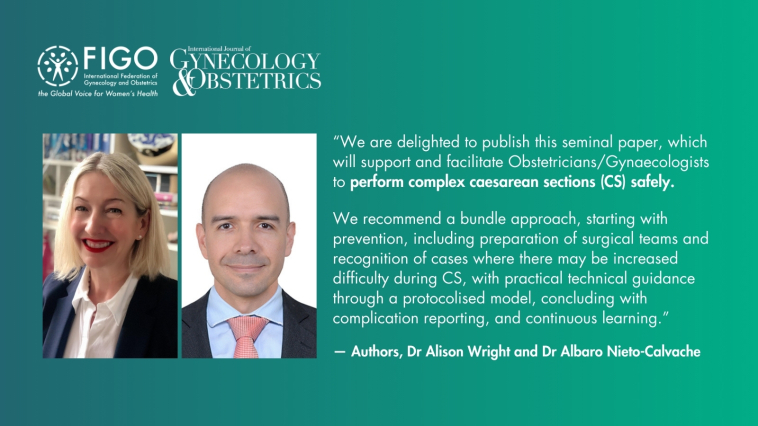FIGO releases new protocol for managing complex caesarean sections

A groundbreaking standardised protocol for managing complex caesarean sections has been introduced by the FIGO Committee on Childbirth and Postpartum Haemorrhage.
Published in the International Journal of Gynecology & Obstetrics (IJGO), this special article addresses critical challenges in obstetric surgery, offering a practical and comprehensive framework for healthcare providers worldwide.
With caesarean section (CS) rates rising globally, particularly in resource-limited settings, the need for consistent and effective approaches to managing complex cases is paramount. This new protocol, developed by leading experts in the field, seeks to improve surgical outcomes and reduce maternal morbidity and mortality associated with CS complications, particularly postpartum haemorrhage (PPH).
"We are delighted to publish this seminal paper, which will support and facilitate obstetricians and gynaecologists to perform complex caesarean sections safely, We recommend a bundle approach, starting with prevention, including preparation of surgical teams and recognition of cases where there may be increased difficulty during CS, with practical technical guidance through a protocolised model, concluding with complication reporting and continuous learning." — Dr Alison Wright and Dr Albaro Nieto-Calvache, authors
Key innovations
The new surgical approach addresses three critical areas:
- Pelvic access: Practical techniques for managing extensive adhesions.
- Bladder mobilisation: Clear guidance to reduce injury risks.
- Postpartum haemorrhage: Focus on uterine vascular anatomy for effective bleeding control.
Prevention and training
The protocol emphasises early identification of high-risk patients during antenatal care and timely referrals to centres with appropriate resources and expertise. To address the global decline in surgical training opportunities, it recommends innovative methods such as simulation-based and virtual training platforms. Additionally, the protocol advocates for structured debriefing, video review, and regular surgical outcome analysis to enhance skills, improve results, and cultivate a culture of safety and excellence in obstetric care.
This comprehensive approach to complex caesarean sections represents a significant step forward in standardising care and improving maternal outcomes globally. The full article, detailing the new protocol and its application, is available in the International Journal of Gynaecology & Obstetrics.